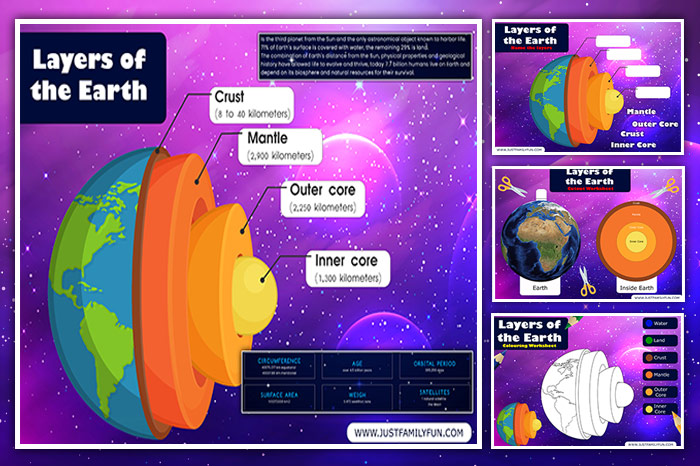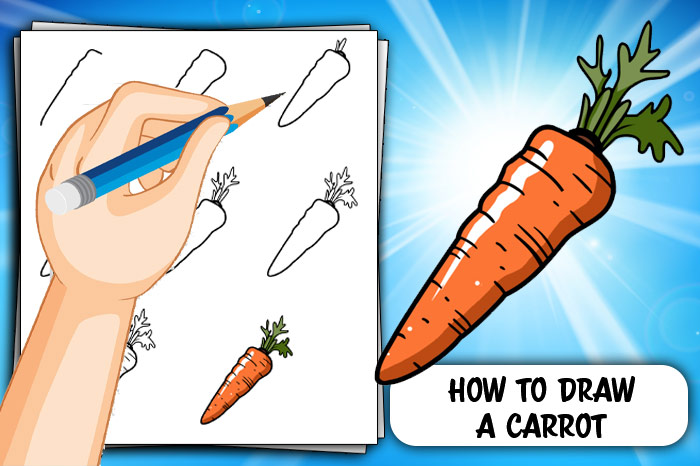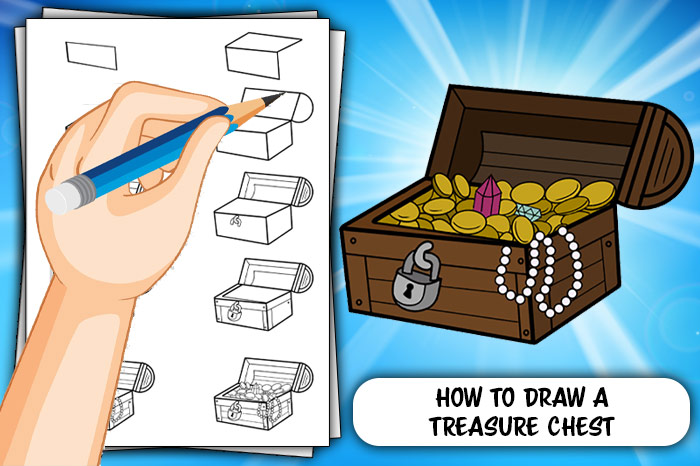Is your child fascinated by volcanoes, earthquakes, the Northern Lights and Mt Everest? None of these can be understood without first getting to know what’s going on inside our planet. Our Layers of the Earth Worksheet pdf is a fantastic way to simplify the Earth layers for kids. It’s free, downloadable and printable so you can be exploring the Inner core, Outer core, Mantle and Crust together in no time.
What’s Included in Our Layers of the Earth PDF Worksheet Pack?
Layers of the Earth Printable Poster – Page 1
This gorgeous, printable poster is full of fascinating facts about the Earth. It also contains everything your child will need to know to complete the worksheets.
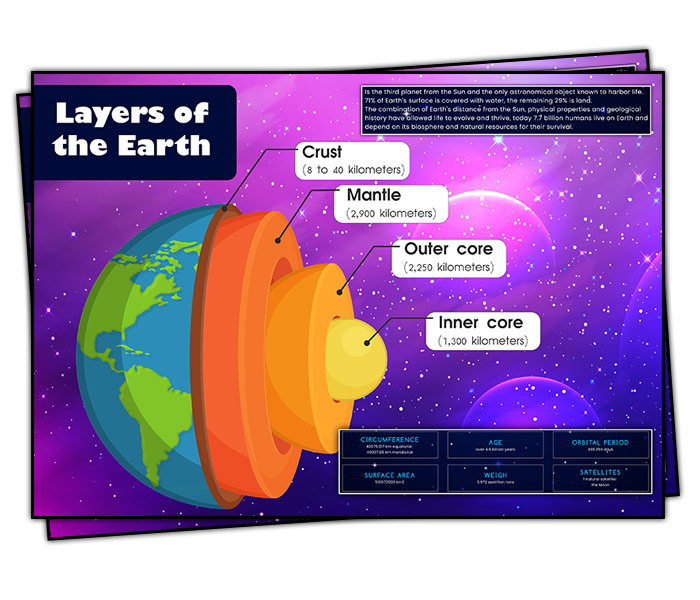
Start them off by focusing on the 4 main layers of the planet. We’ve included the thickness of the layers on our diagram but there are so many interesting facts to learn about each one.
Inner Core
- Made of iron and nickel. This is because when Earth formed the densest materials sank to the centre.
- As hot as the surface of the Sun, 5505oC!
- A ball of solid metal. It’s under so much pressure that even though the temperature is hot enough to melt the iron and nickel they’re solid. This is because they’re squeezed so tightly by the pressure.
- 1,300km from the centre to the Outer core.
Outer Core
- Also made of iron and nickel.
- The hottest layer of the Earth, 6100oC.
- The metal here is a liquid that spins as the planet rotates. This is what drives Earth’s magnetic field. Without it, we wouldn’t have protection from destructive solar winds. Particles from these solar winds collide with our magnetic field. They’re then carried towards the North and South poles. There, they light up the skies as the Northern and Southern lights.
- 2250km thick.
Mantle
- Made of iron, magnesium and silicon.
- The temperature varies from 3700oC near the Outer core to 1000oC near the Crust.
- The temperatures here are hot enough to melt rock. This means the layer is mostly molten and the heat drives currents causing it to move. This moves the Crust above it causing earthquakes, volcanoes and even mountains to form!
- 2900km thick.
Crust
- Made from rocks like granite and basalt.
- The temperature is around 16oC but varies across the planet.
- New crust is formed by volcanoes all the time. Old crust is also being destroyed at destructive plate boundaries so it balances out.
- 8-40km thick.
Key Questions
After you’ve studied the diagram with your little scientist, ask them some questions to get their brain working.
- Which layer do we live on?
- Why do you think humans have never visited the Outer core?
- How do we know the Inner core is made of metal?
- Which layer do we see when volcanoes erupt?
Label the Layers of the Earth – Page 2
To make the learning stick young brains need to be active. A great way to achieve this is to recall information. Challenge your little one to remember the keywords from the poster and label the layers of the Earth.
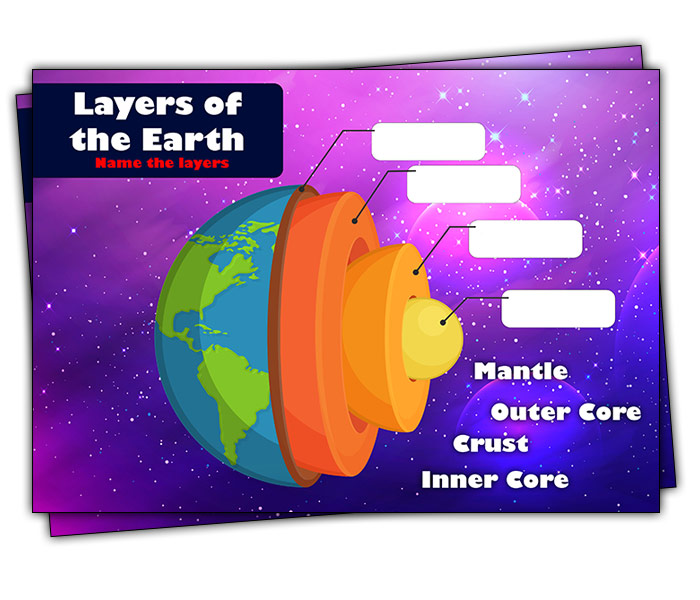
Challenges
Let them choose the challenge that suits them. Are they feeling confident enough to tackle the super spelling challenge?
- Look, Cover, Write, Check – Let your child look at the Layers of the Earth Poster, cover it, write the names of the layers and then check their answers.
- Match up – Match up the names of the layers from the bottom right of the sheet with the correct boxes.
- Super Spelling – Cover the poster and the keywords on the labelling sheet. See if they can remember which layer is which and spell them correctly too!
Layers of the Earth Cutout Worksheet – Page 3
If your little one needs to get hands-on with their learning this interactive page will be perfect. Your young scientist can also practice their cutting and sticking skills with this fun layers of the Earth project.
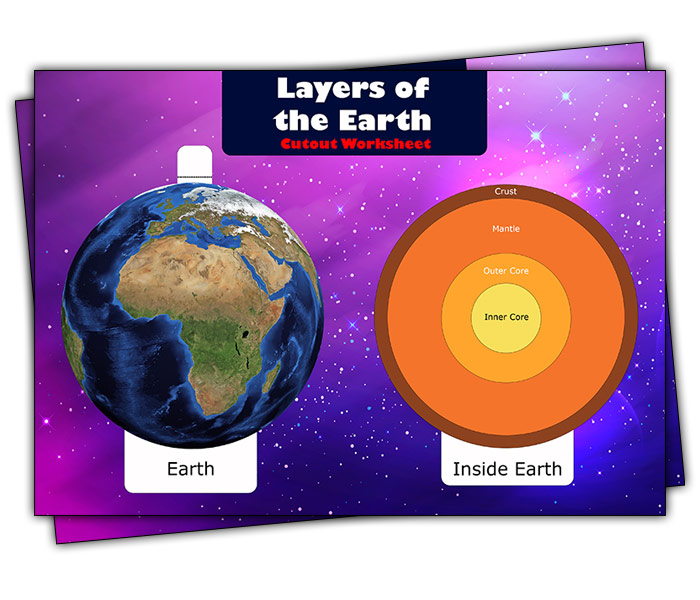
How to Use
- Cut out the Earth and Inside Earth images. Be careful not to cut off the tabs.
- Fold the tab at the top of the Earth.
- Place the Earth image on top of the Inside Earth image.
- Glue the tab to the back of the Inside Earth image.
- Now you’ll be able to lift the Earth to reveal the picture of the layers inside.
Layers of the Earth Colouring Worksheet – Page 4
After your child’s hard work let them wind down with a fab layers of the Earth colouring page. However, they’ll still need their brain switched on as a colour key is provided. They’ll need to remember the names of each layer to use the right colour. The answer key is in the bottom left so be sure to cover this up before they start!
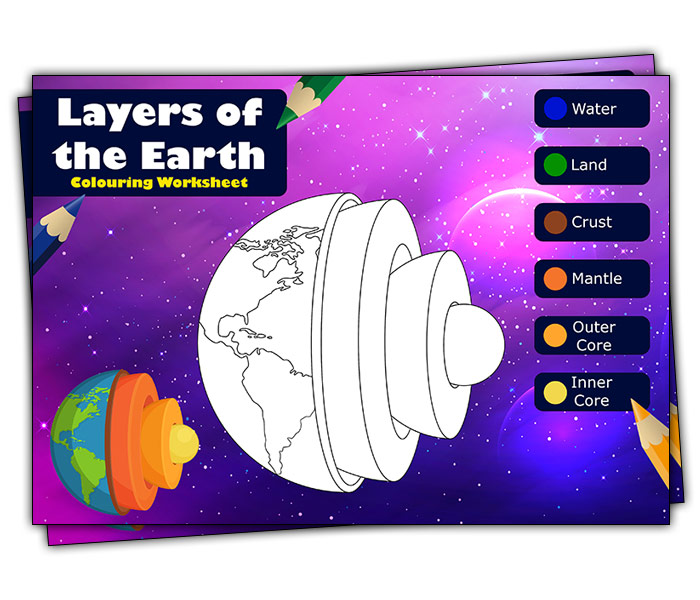
Ready to Get Your Layers of the Earth PDF worksheets?
Layers of the Earth Quiz
After you’ve completed our terrific Earth science worksheets with your little one try to tackle this quiz together. Scroll down for the answers.
- Which 2 layers of the Earth are solid?
- Which is the hottest layer?
- Why is the inner core made of lead and nickel?
- Where does lava come from?
- Which layer is the thickest?
- Which layer is the coolest?
- Which is hotter, the surface of the Sun or the Outer Core?
- Which layer is under the most pressure?
- Which layer is at the centre of the Earth?
- Which layer are you sitting on right now?
Did you and your child love learning about Earth’s interior together?
We have lots more super science worksheets and activities for you to try next! Explore some more planets with our Downloadable Earth & Space Activity Sheets, head to the Moon with our Free Phases of the Moon Printable Worksheets or stay on Earth with our Free Printable Weather Chart pdf Worksheets.
Layers of the Earth Quiz Answer Key
1. Inner core and Crust
2. Outer core
3. They’re the heaviest particles
4. The Mantle
5. The Mantle
6. The Crust
7. The Outer core
8. The Inner core
9. The Inner core
10. The Crust

